We've had such a great time on Orkney, especially today.
Yesterday was mostly spent driving from Inverness and on the ferry, and the weather was not great. It was extremely windy at the mainland port town of Thurso - we took one look at the choppy waters and immediately swallowed two Dramamine each!
But the ferry was larger and nicer than we expected and the crossing was remarkably smooth given the conditions; just a lot of gentle rocking that almost put us to sleep. Going out on the deck was an adventure, though - I could barely pry the door open in the wind!
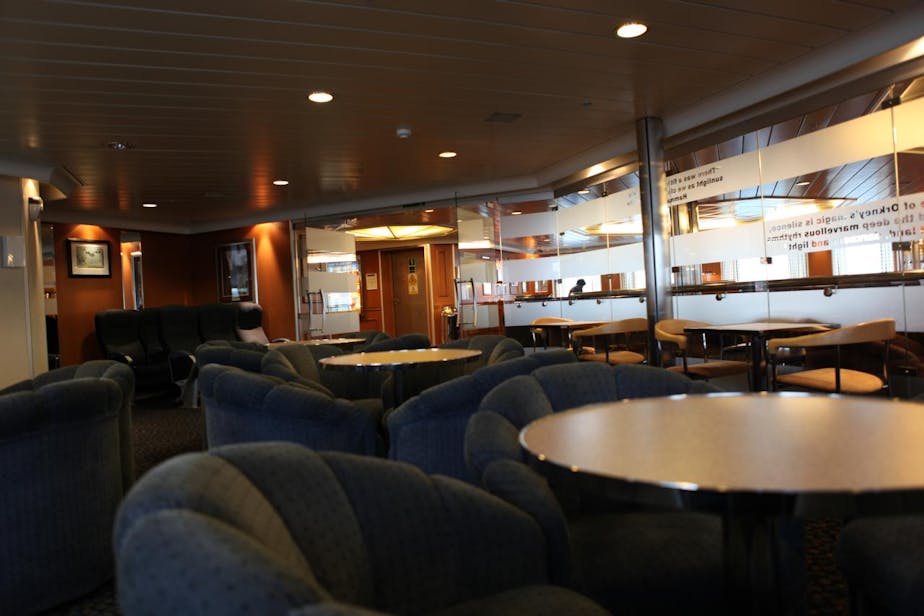
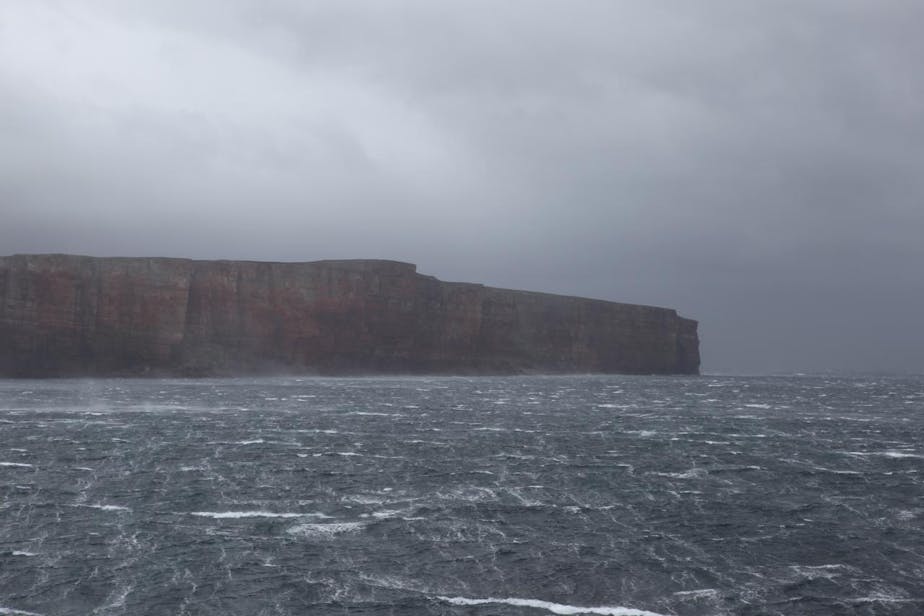
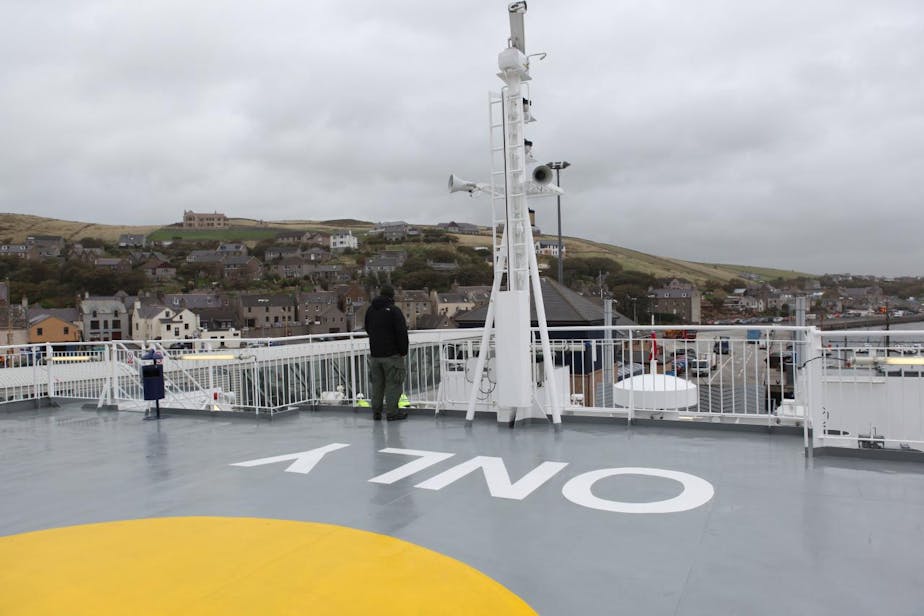
The ferry ticket agent in Thurso had mentioned that the weather was due to "take a turn" that evening, and indeed it did! By the time we arrived on Orkney, a cold wind was blowing hard and it was beginning to rain. But not knowing if it would only get worse, we stopped at the most important site (the magnificent Stones of Stenness) on the way to the B&B and I fought the wind for some photos. Brrr!
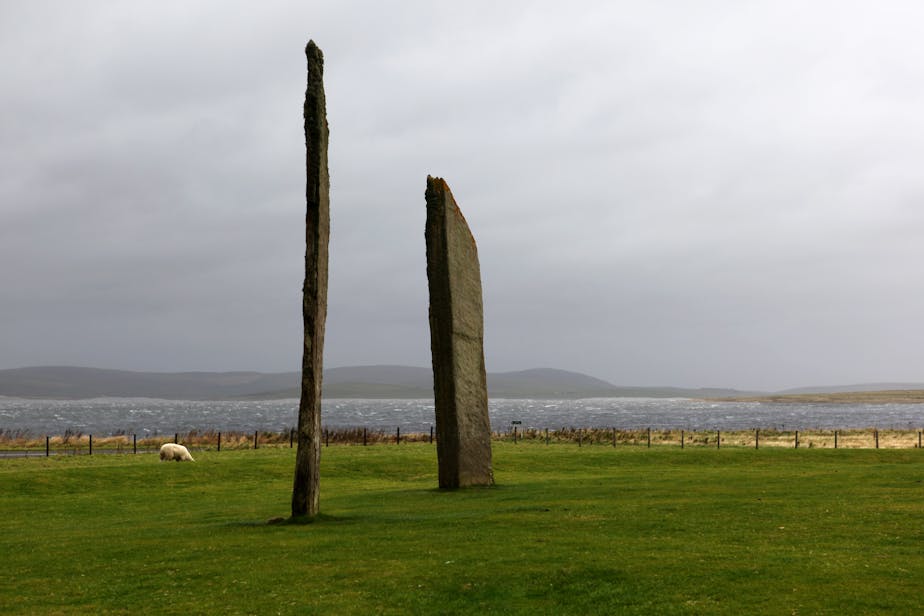
By the time we arrived at our B&B, which is about 30 minutes' drive from the port, it was raining hard sideways. We later heard that the next ferry that evening had to be canceled. But thankfully the B&B is strongly built and cozy and our car has heated seats! After checking in, we drove immediately into town to brave the elements for an exploration of "downtown" and dinner (we didn't even take our cameras as they would have gotten very wet), then dried off and crashed early. There weren't too many other tourists to be seen.

Happily, the storm passed during the night, and today we had the most beautiful weather all day. It was still seriously windy, but sunny and comparatively warm. Amazing! We had a wonderful long day driving all around the main island, seeing lots of prehistoric sights and beautiful landscapes. Here are just a few highlights from many:
Ring of Brodgar
The Ring of Brodgar was the most important site for us to photograph, as it's an especially famous stone circle, dating from around 2500 BCE. It was really awesome. Not only is it a great stone circle, but it's in a gorgeous location with lots of atmosphere. No visitor center, no admission fee... just an impressive ancient site in a meadow by the sea. We visited it twice - in the clouds and wind upon arrival as mentioned above, and in much more beautiful conditions first thing the next morning.
{img6890} {img6898} {img6909}

Skara Brae
Not far from the Ring of Brodgar is Skara Brae, a Neolithic settlement that is really well-preserved, including stone furniture! It is 5,000 years old, which is significantly older than both the Pyramids of Giza and Stonehenge. It has a magnificent location by the sea and was really something.
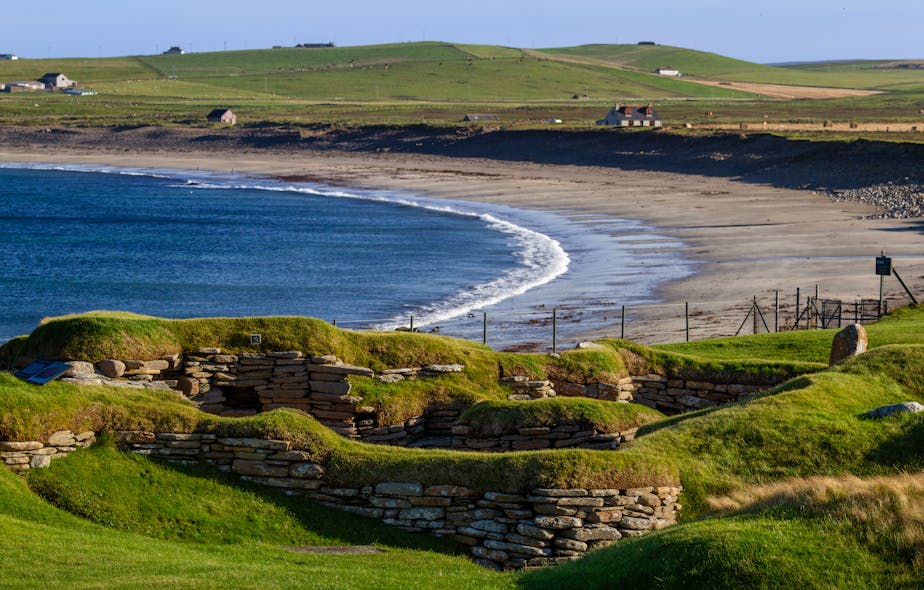
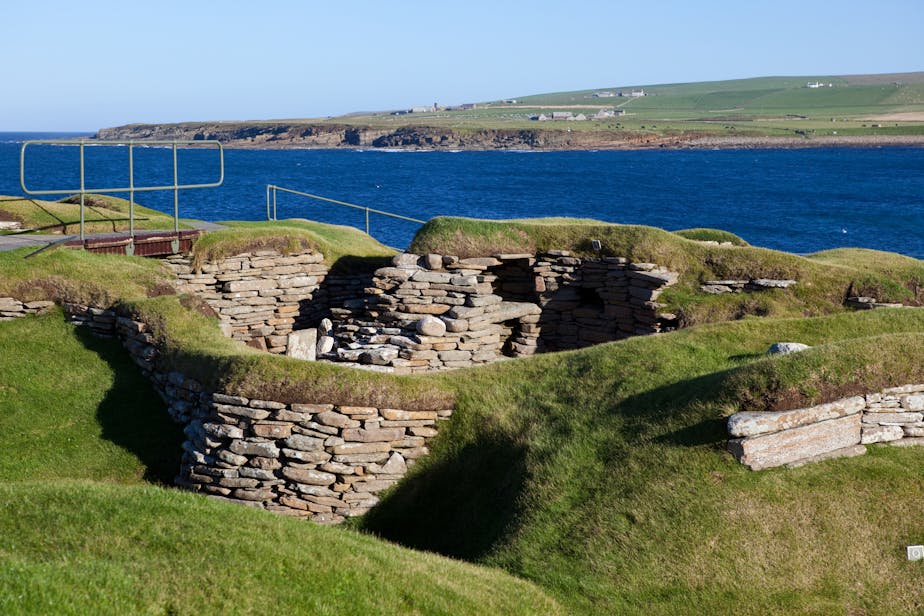
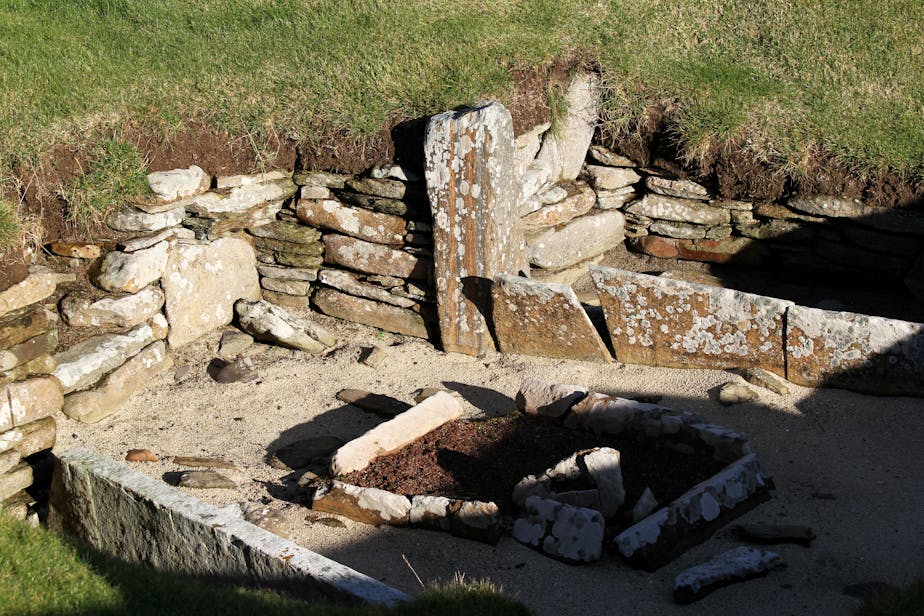
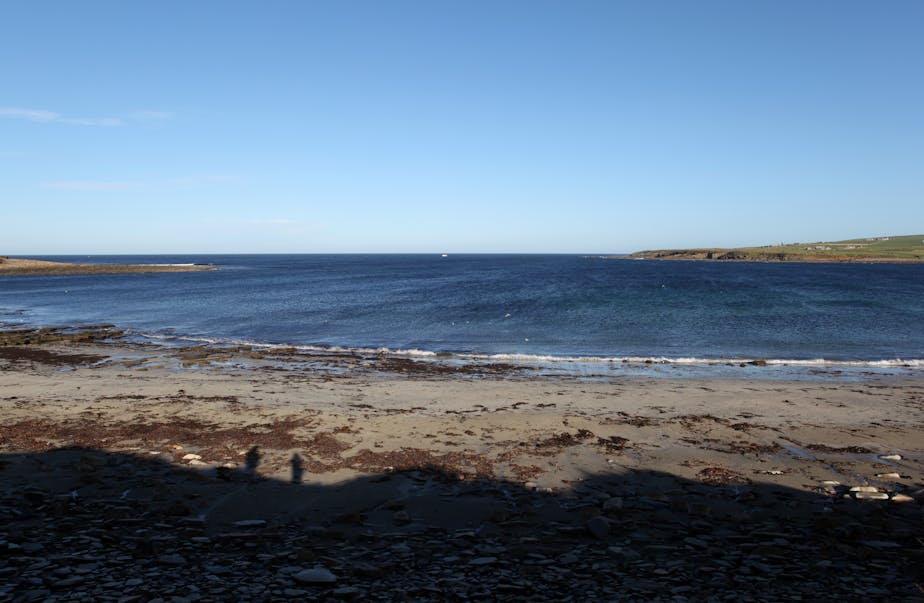
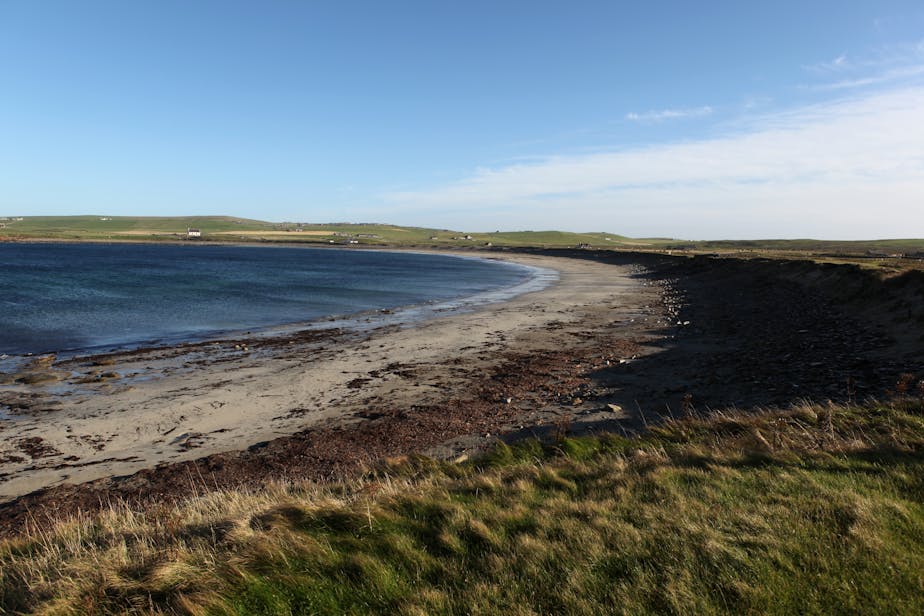
Chamber Cairns
We then visited three chamber cairns (prehistoric tombs), which were pretty cool. The first (Maes Howe) was the largest and required a scheduled guided tour that went on too long, as always. David opted out. Photos weren't allowed because it can be annoying to other members of the tour, but I was left alone for a few minutes in the chamber so I got a few snaps!
Approach
Entrance

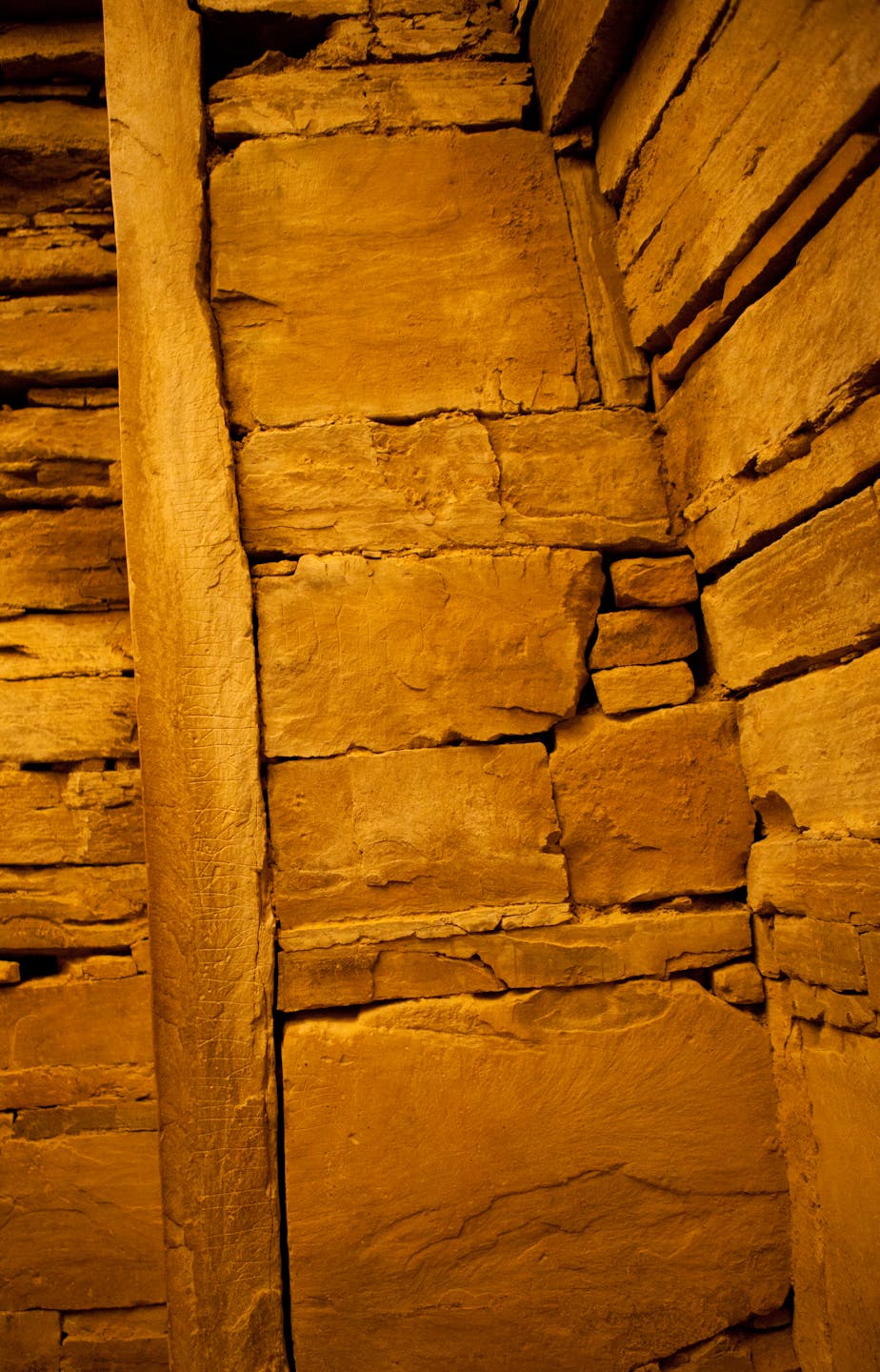
You really have to stoop over to enter the passage and I managed to bonk my head pretty hard on the stone on my way out. It was rather painful, but I have no extra brain damage as far as I can tell. What's my name again?
The second chamber cairn (Unstan) was smaller and easy to visit, and very cool inside, but it had a lame modern ceiling that ruined its atmosphere somewhat.

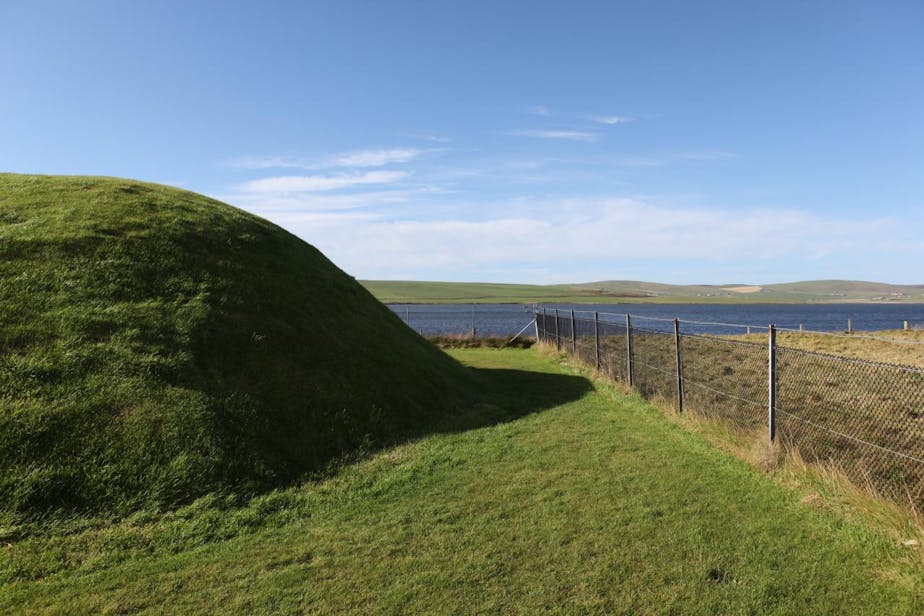
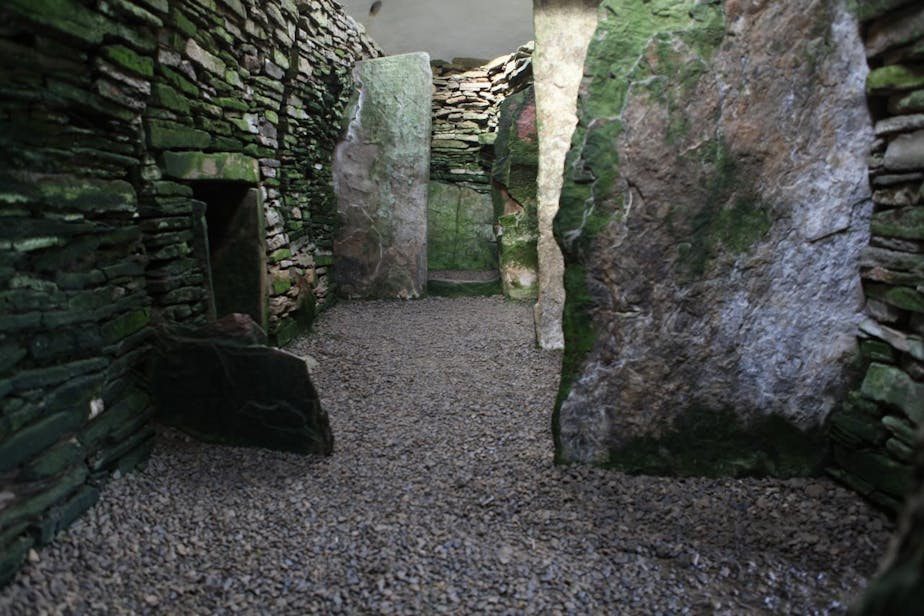
The third chamber cairn (Cuwee) was at the top of a steep hill and its passage was the smallest one yet - I only barely managed to inch along down the passage without getting on my hands and knees, but did end up putting my hands on the muddy stones in the end anyway. Yuck.
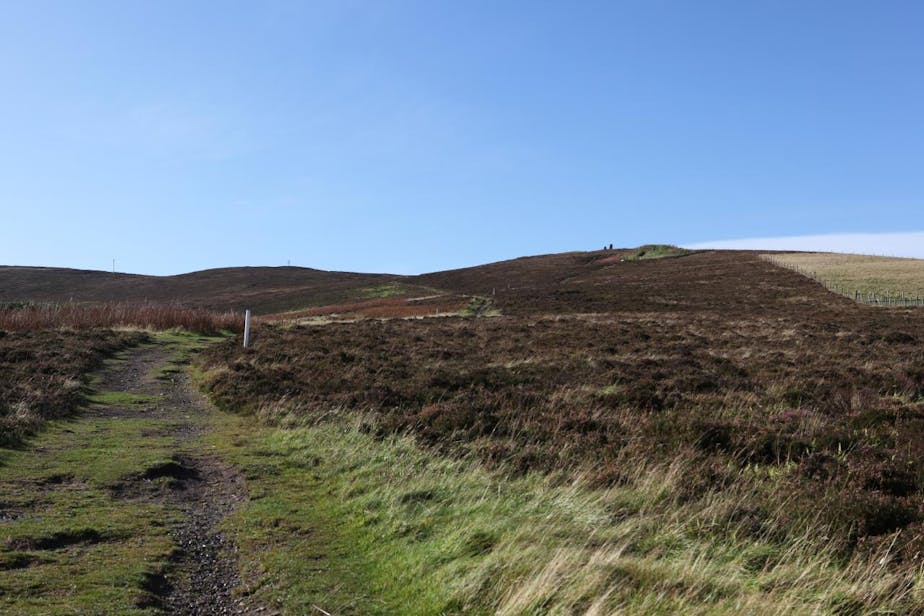

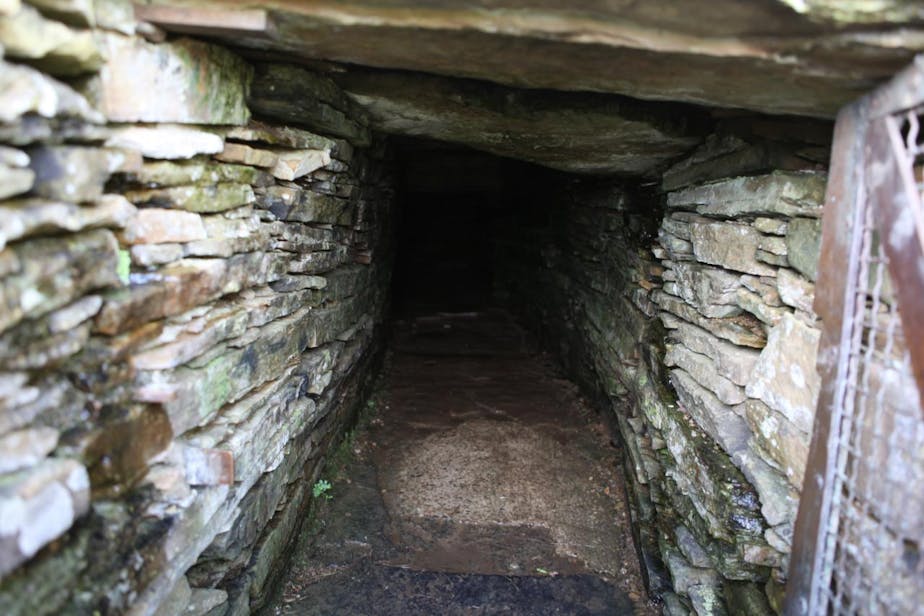
Once inside, I could stand up to full height, but it was pitch dark! I had checked the free box of flashlights provided outside the tomb but all their batteries were dead, and I decided to go in anyway. I could see where I was standing by the light coming through the passage, but everything else was totally dark.
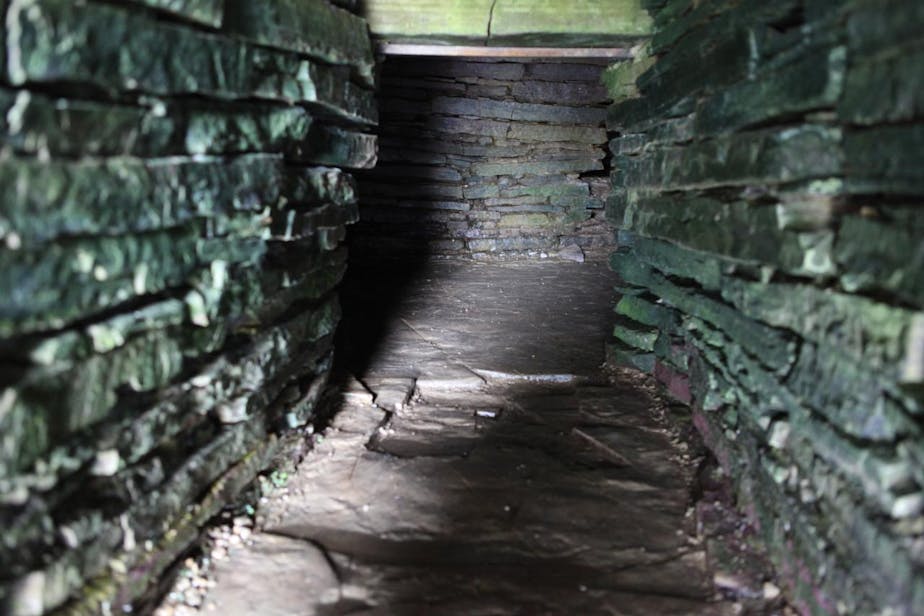
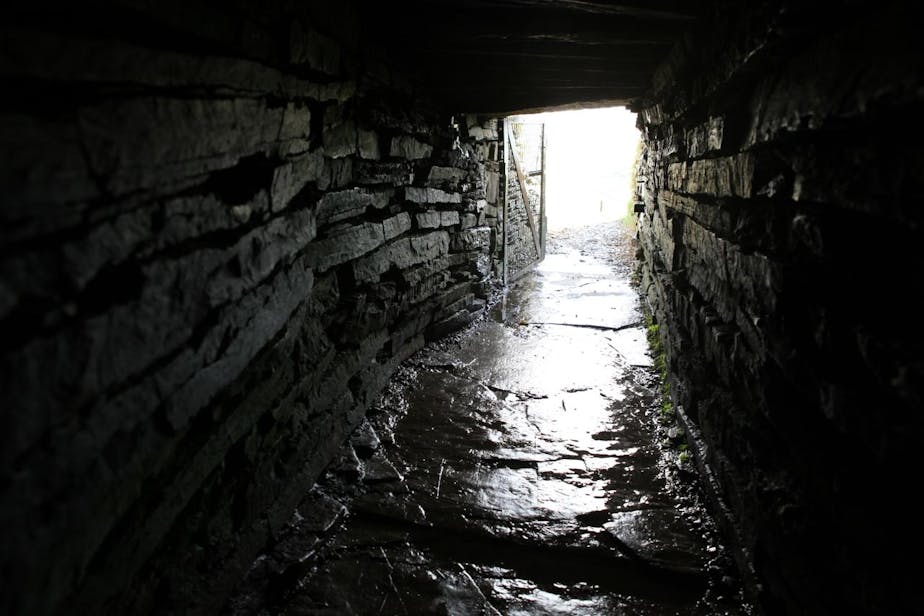
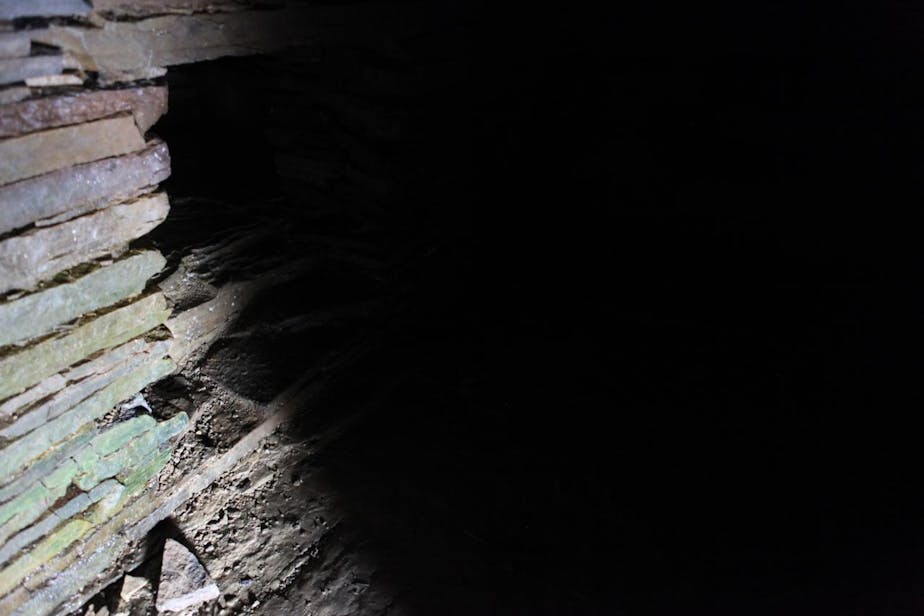
I have no flash on my camera (this is the only time I wish I did), so I set it on the ground and tried to do a long exposure. It didn't really work. It was an adventure, anyway, and I don't often get the opportunity to be alone in a dark prehistoric tomb!
Churchill Barriers and Italian Chapel
After a stop for lunch at the same place we had dinner last night, we headed south for some much more recent history. The Churchill Barriers were ordered by Winston Churchill to block German U-boats from traveling through the Orkney Islands in World War II.

The barriers were built by prisoners of war, including Italians who managed to build quite a nice chapel for themselves in their prison camp, using two huts put together and decorated by an especially artistic prisoner. It's the only building that survives from their camp today.
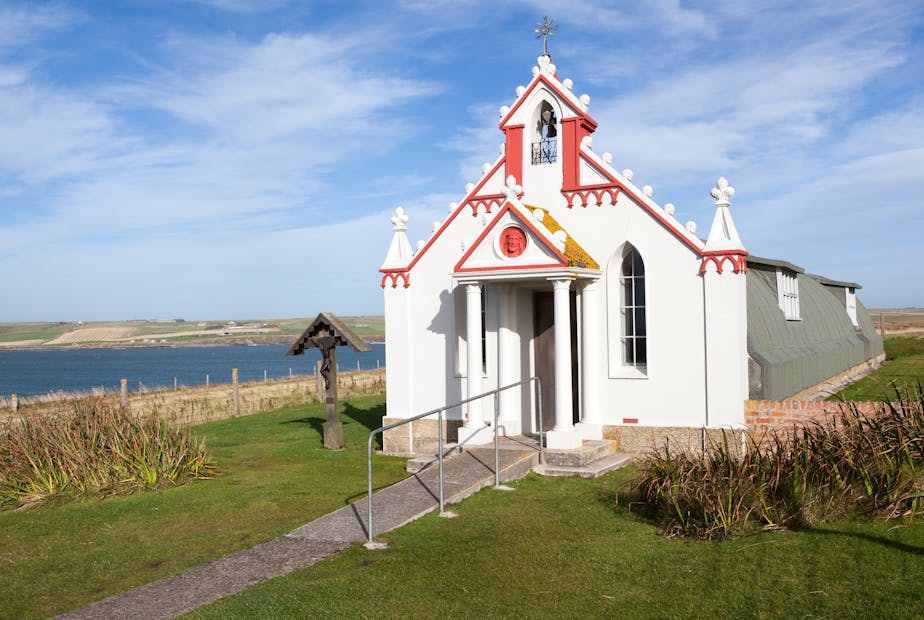
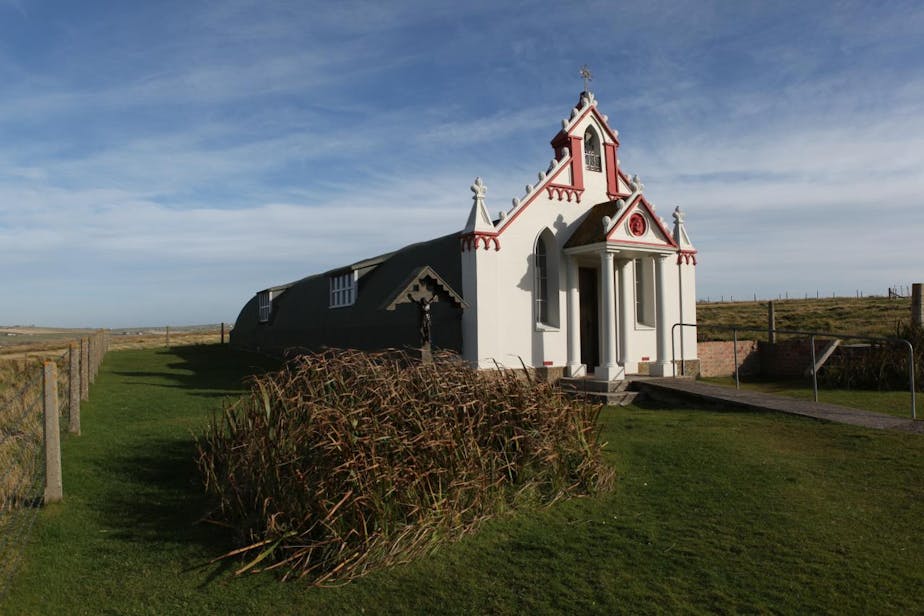


Broch of Gurness
The Broch of Gurness is an Iron Age settlement (9th-century-ish CE), thousands of years newer than Skara Brae but quite similar in appearance. It's in another spectacular location on the north coast of the main Orkney island.
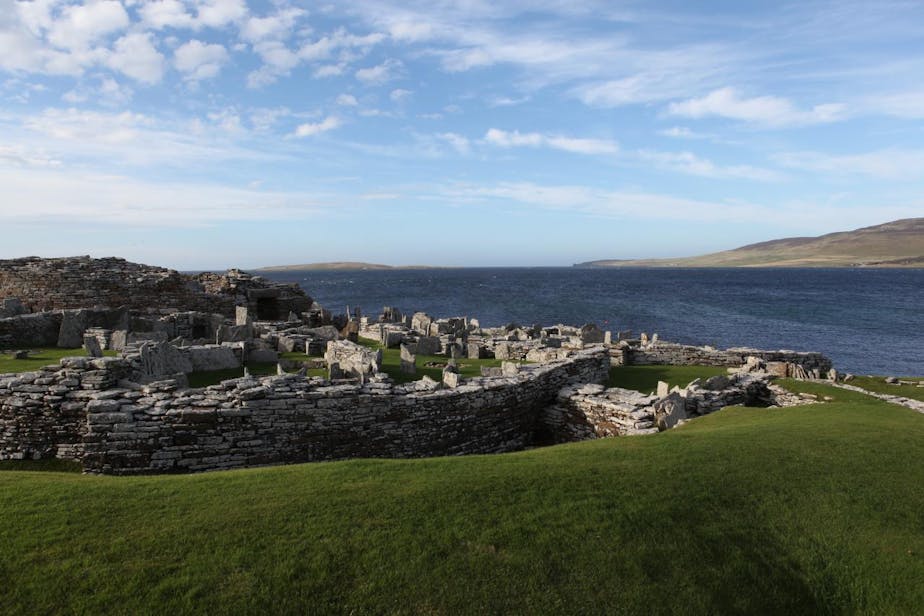
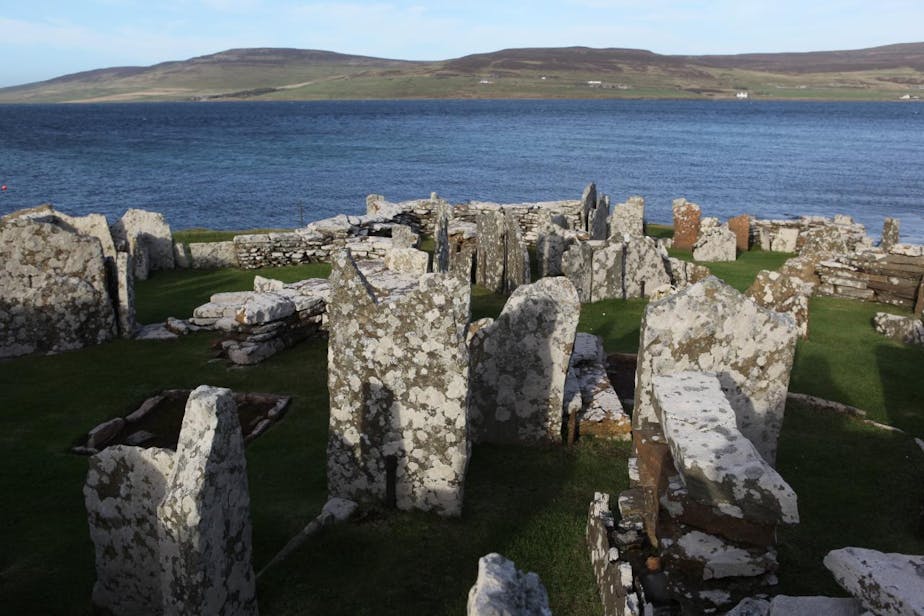
Bay of Birsay
And finally, we went down to the beach and climbed on the rocks at the Bay of Birsay to see a tidal island (currently high tide and not accessible) with some Norse ruins on it. It was just yet another spectacular sight, and a nice conclusion to a wonderful day out.

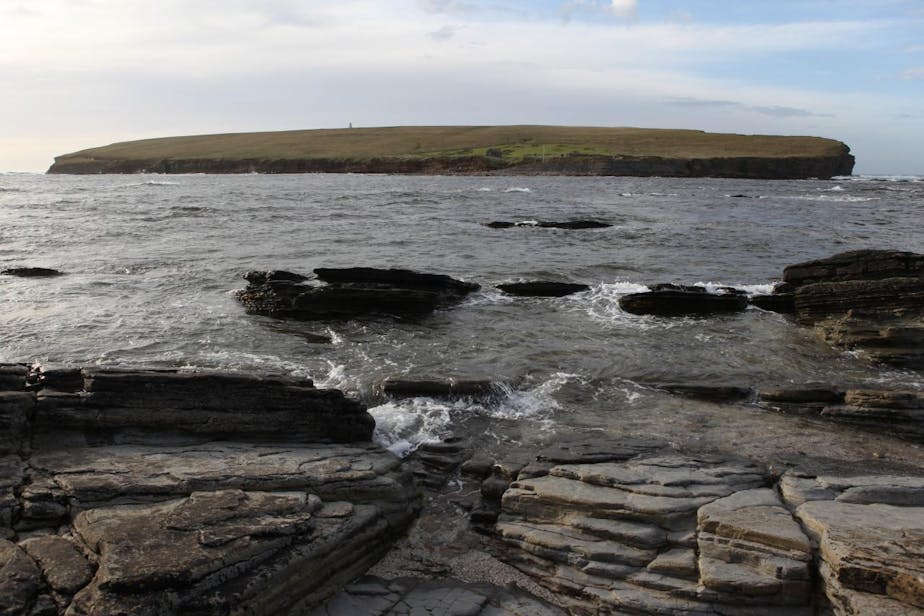


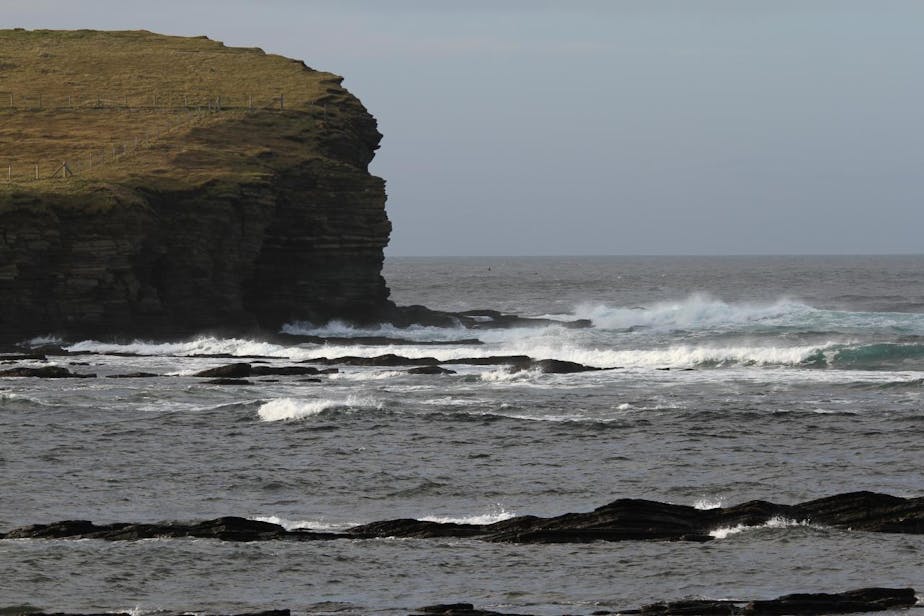
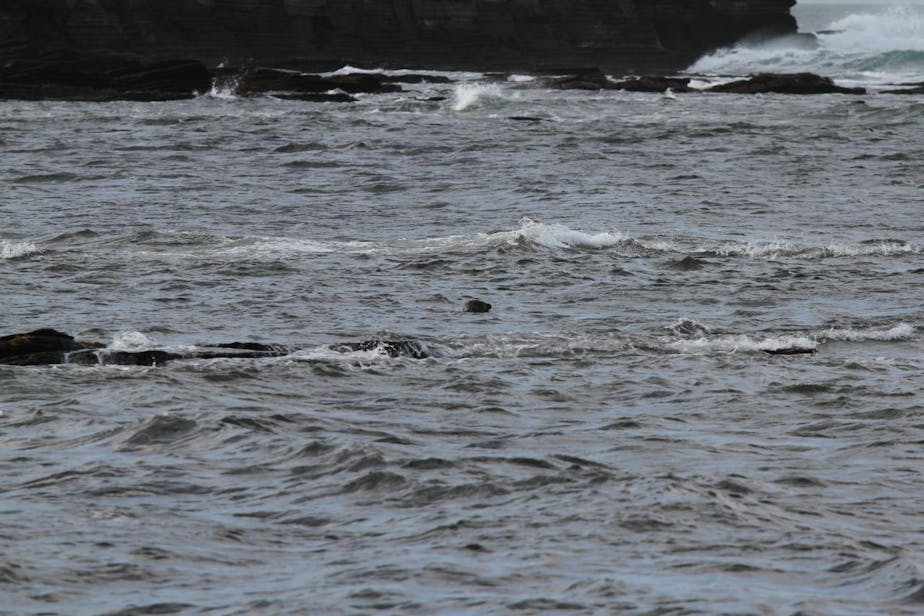
Random Food Photo
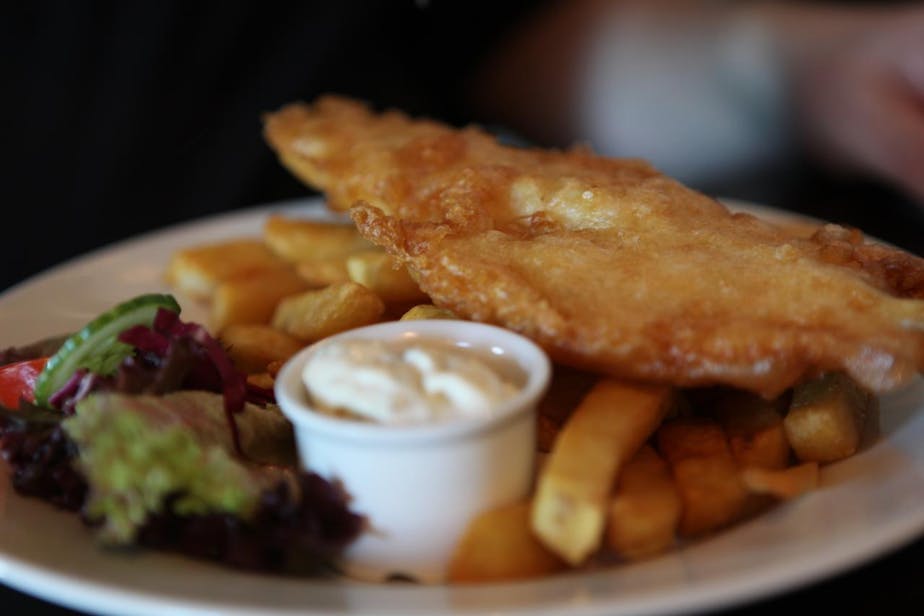
Tomorrow: another ferry and long drive to the Isle of Skye.
